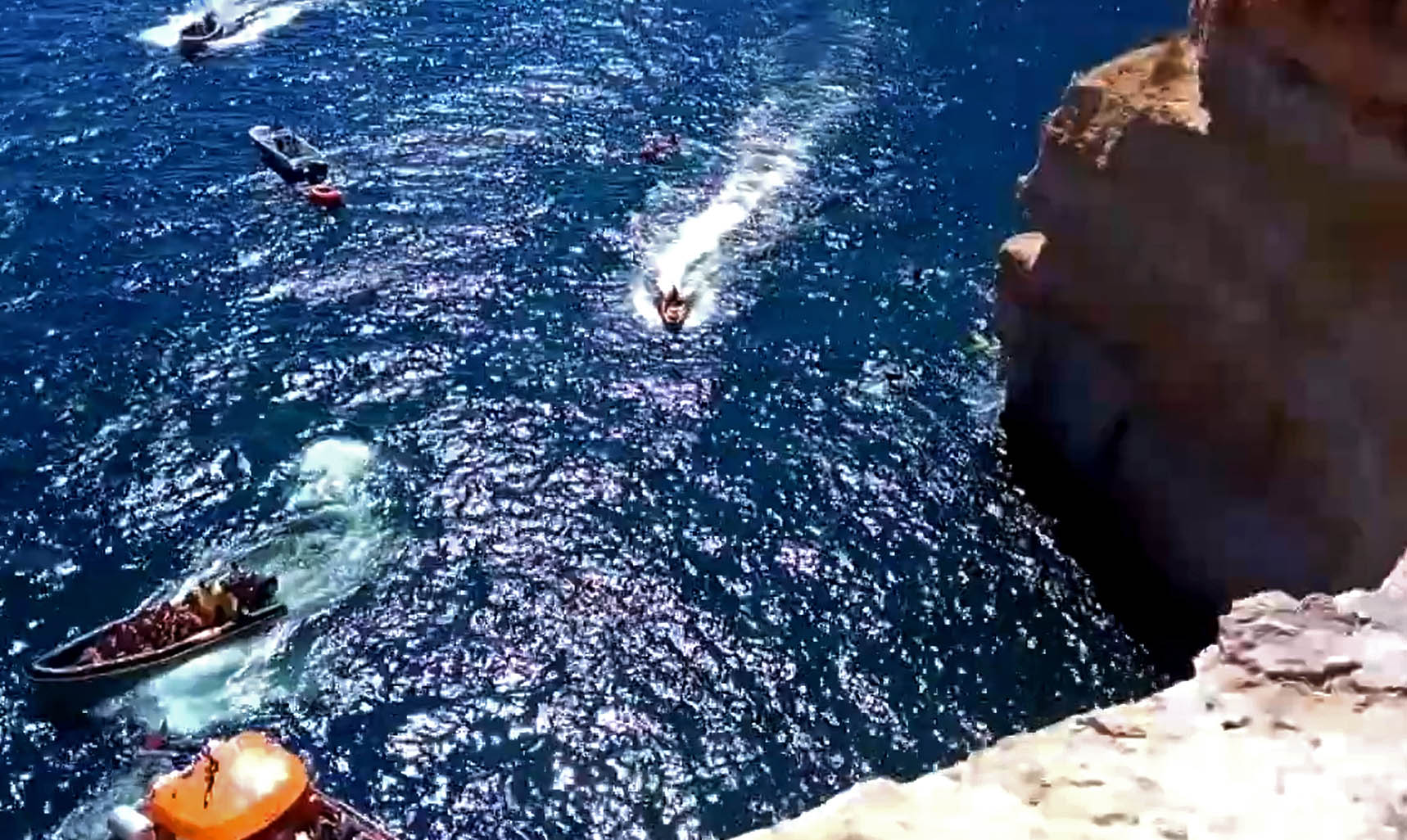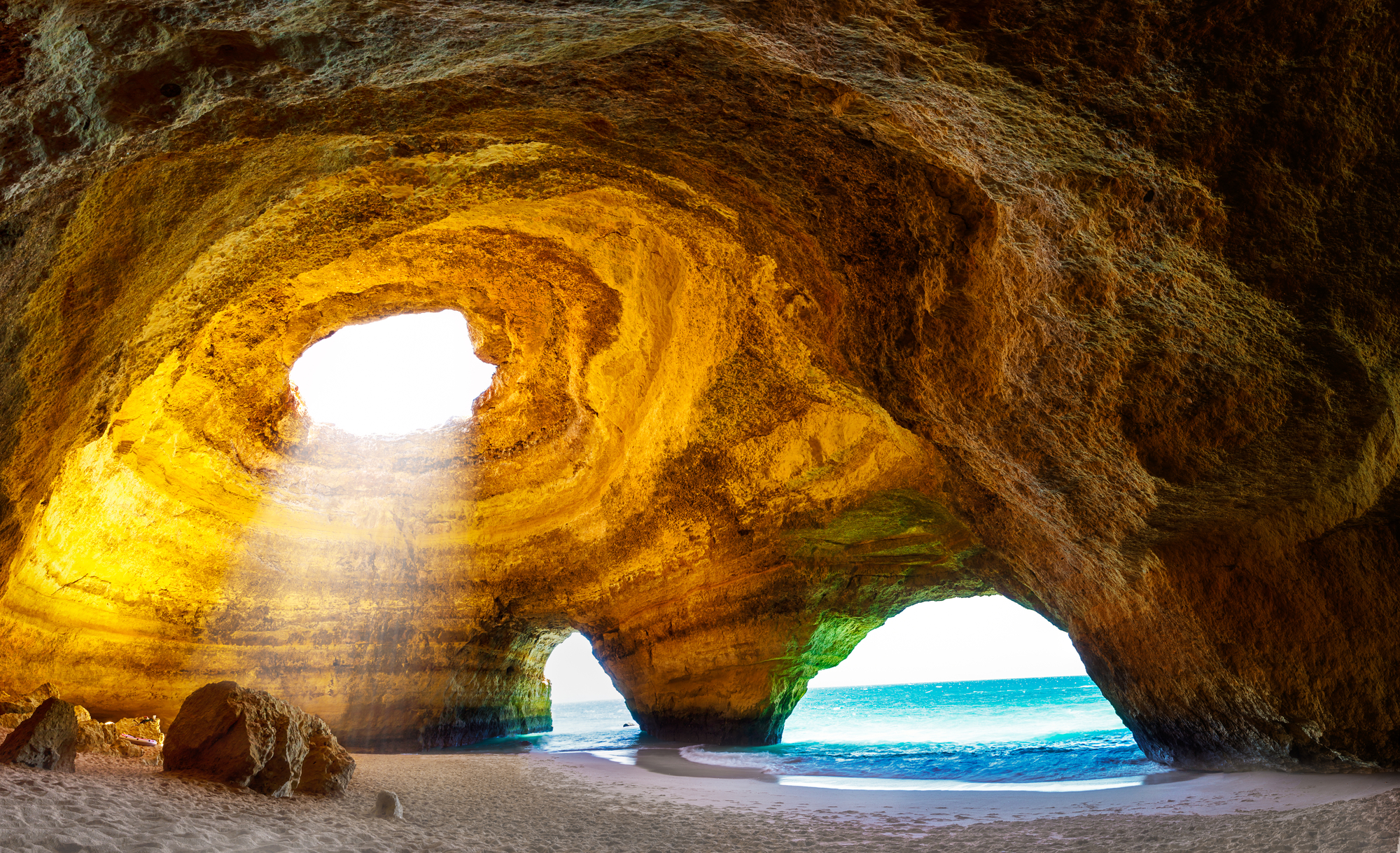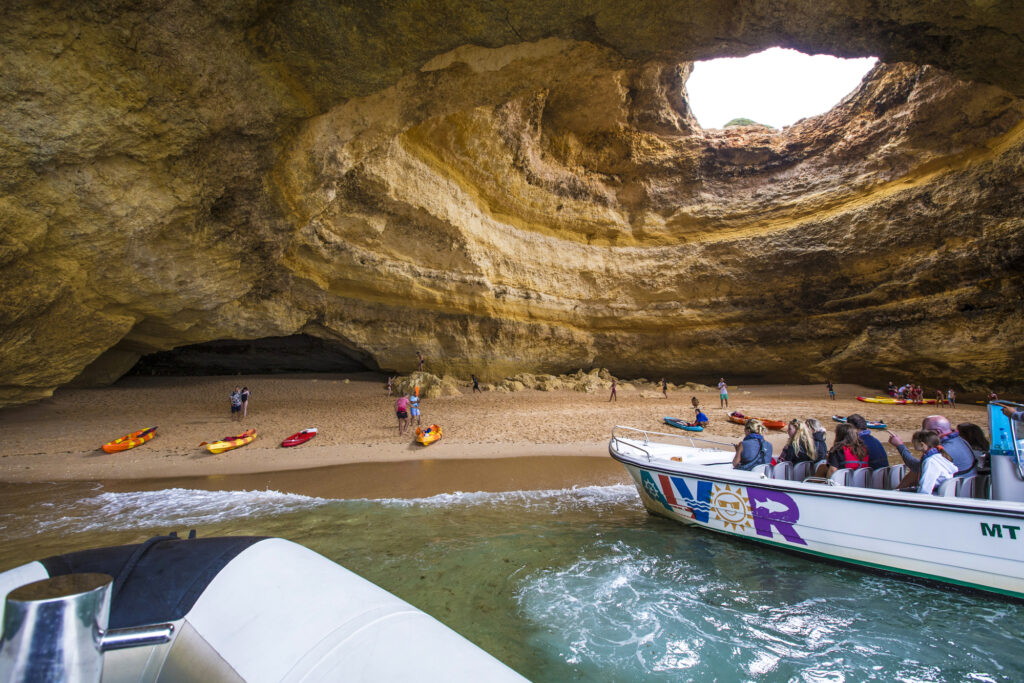Twelve simple recommendations and a code of conduct should be implemented, as early as 2024, in access to the Benagil Caves, through the publication of a Notice or Administrative Regulation, to be launched by the Portuguese Environment Agency, National Maritime Authority, Lagoa City Council and the Institute of Nature Conservation and Forests.
This is the main result of the meetings of the Benagil Caves Working Group, whose Progress Report and annexes are available from today, the 24th, on “Participa.pt” platform, for public consultation, for a period of 20 days.
The issue of the possible creation of an access fee is not included in the recommendations, but is very explicit in the «Measures to Consensus», when it states that a «prior registration, on the electronic platform, for visiting the Benagil Caves», which must be implemented, will “include the payment of a tourist tax”.
«The resulting revenues should be used in management and conservation initiatives for the natural and cultural values of this area, as well as in security actions and management of visits to the Benagil Caves», it is explained.
The public consultation, which runs until February 21st, is intended to collect "opinions and contributions", which will then be evaluated and considered, in order to make "any adjustments that may be justified in the documents to be submitted to the Superior Guardianship, enabling political and legislative decisions considered appropriate”.
The Simplified Recommendations and the Code of Conduct, which «must be presented to customers (and posted in appropriate and visible locations)», are intended to organize «the multiple uses that coexist in this area, mitigating potential conflicts, promoting security, promoting simultaneously conserving natural and cultural heritage and contributing to the enhancement of the tourist offer in the Benagil Caves».
According to an estimate presented by the Algarve Anima association, which is one of the entities that formed part of the Working Group, «from the Albufeira Marina alone, around 750 passengers visit the caves on boats, and it can be extrapolated that in those caves there are more than 000 million of tourists annually (embarked)”.

It is also important to consider that, «in the summer months, there is a huge amount of boat traffic» without engines, such as kayaks, canoes and Stand up paddle.
«Throughout the high season, during the day, up to 200 people are permanently inside Algar de Benagil». This congestion has already caused conflicts between users and between companies involved in maritime and tourist activities, conflicts that have already led to physical confrontations.
It is all this confusion and the dangers, for people and nature, that the Working Group now wants to regulate. As the Report now highlights in public consultation, «in view of the large number of visitors and the conflicts that occurred, the urgency of regulating visits to the Benagil Caves is unanimous».
While it is not possible for the regulations to be legally established, a set of 12 Recommendations should then be put forward this summer, which include prohibiting disembarking and/or bathing use of the beach, inside the cave, or even access to the interior. of the Benagil Caves of visitors swimming or using buoyancy aids (eg buoys, bodyboards, mattresses) simultaneously with motorized platforms.
For these swimming visitors, it is recommended that «there is a timetable before visits by motorized vessels», for example from 7 am to 10 am.
Furthermore, maritime tourism (MT) operators “must provide customers with adequate and standardized information about the activity, particularly regarding individual and collective safety, highlighting that the activity takes place, simultaneously, in a risk area and with conservation status, promoting environmental awareness, using effective and acceptable pedagogical methodologies».
When accessing the interior of the Benagil Caves, separation between motorized and non-motorized boats is recommended, with kayaks and SUPs “must access the interior and leave the Benagil Caves only through the East Entrance, in a single file, and circulation in a U shape to enter and exit the Cave», while the «Motorized Platforms must access the interior of the Benagil Caves and exit only through the Western Entrance».
A recommended maximum number of boats, motorized or not, is also defined inside, in order to allow “the execution of maneuvers safely inside the cave”.
It is recommended that access and circulation maps be created for the Benagil Caves, by Motorized and Non-Motorized Platforms, made available and disseminated among users of the Caves and Benagil, and posted in suitable locations for their effective dissemination.
Furthermore, permanent on-site supervision must be implemented using a CCTV system, or similar, linked to the National Maritime Authority.
Diving with an autonomous diving suit or apnea will not be permitted inside the Benagil caves or in the surrounding access areas, except for monitoring or scientific research actions, requiring prior authorization from the competent authorities.
Finally, underwater fishing and recreational fishing (on foot or on board) are prohibited in the vicinity or inside the cave.

Despite not being included in this set of simplified recommendations, the need to promote the "training and qualification (and periodic requalification to be defined)" of MT company guides, providing them with training about the geology and ecology of the area.
In the future, the Working Group also recommends that “a specific monitoring program be implemented to assess the risk of the karst landscape where the Benagil Caves are located. This monitoring must be carried out on an annual/six-monthly basis and must be reinforced whenever situations that may worsen the risk occur (earthquakes, episodes of precipitation or extreme sea disturbances)».
As a preventive measure, and if any of the events described above occur, access to the Benagil Caves may even be prohibited.
“Correction measures must also be considered for the Benagil Cave cliff, by APA/ARH, whenever the monitoring assessment so determines, trying to minimize the risk of accidental falls of blocks or landslides”, as well as “the possibility of developing technological tools (motion sensors, vibration) to be implemented at key points inside the Benagil Cave that allow continuous monitoring of the risk of collapse».
The multidisciplinary working group called “Benagil Caves Working Group” was created following the publication, on August 30, 2023, of Joint Order No. 8777/2023, of the Secretaries of State for National Defense, Tourism, Commerce and Services, Sea, Environment, Nature Conservation and Forests, Local Administration and Spatial Planning and the Secretary of State for Fisheries.
Its mission was to establish the human carrying capacity and determine the conditions of access to the Benagil Caves, located off Benagil Beach, in the municipality of Lagoa, which constitute «relevant natural heritage and one of the main tourist attractions in the Algarve that , in the summer period, has aroused the interest of more and more visitors, especially by sea».
The Working Group, coordinated by the Algarve Regional Coordination and Development Commission (CCDR), was initially composed of twenty entities, including seven State Secretariats, the Câmara de Lagoa, Turismo de Portugal and the Algarve Tourism Region, ICNF, IPMA, AMAL, the National Maritime Authority. But other entities ended up being invited, such as the AlgarveAnima association, the Portuguese Association of Congress, Tourist Entertainment and Event Companies, or even representatives of the population of Benagil.
Access to the Benagil cave – which is locally known as Algar do Zé Rodeira –, especially during the summer, is true chaos. There are boats of all sizes and types entering the immense cave, but also jet skis, canoes, kayaks, people on paddleboards or inflatable mattresses, swimmers, even children with armbands.
There are vessels, maritime-tourist or private, that come from the nearby beach of Benagil or Carvoeiro, but also from more distant areas, such as Ferragudo, Portimão, Lagos, Albufeira or even Faro. Boats line up, by the dozens, at the entrance to the fragile cave.
The Benagil cave was once considered one of the most beautiful in the world, appears in all tourist guides, appears on posters and promotional videos... but always as if it were a paradisiacal place, without anyone. Now, the reality is very different and there has been talk for years about the need to regulate access to that sensitive area of the coast.
This is what the Working Group has now done, although there are still many steps to be taken before all the measures can actually be implemented.



















Comments